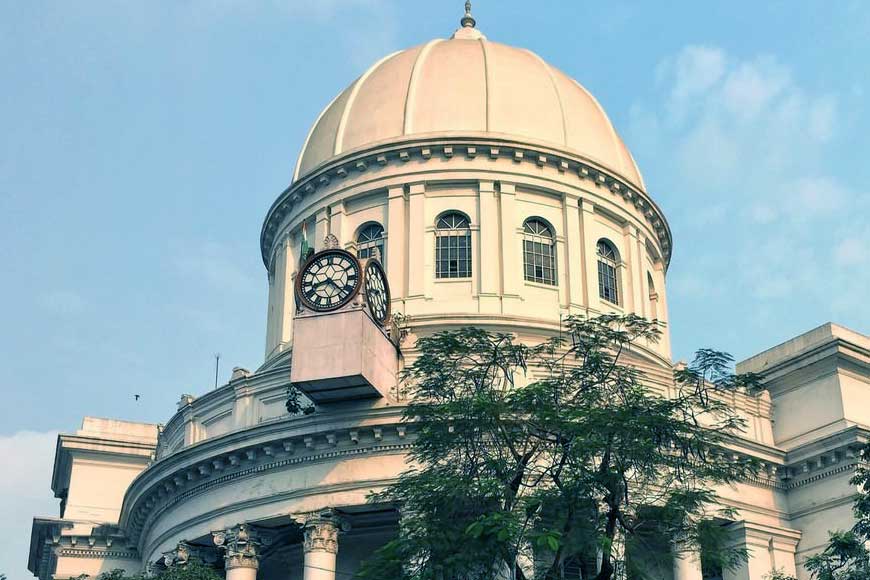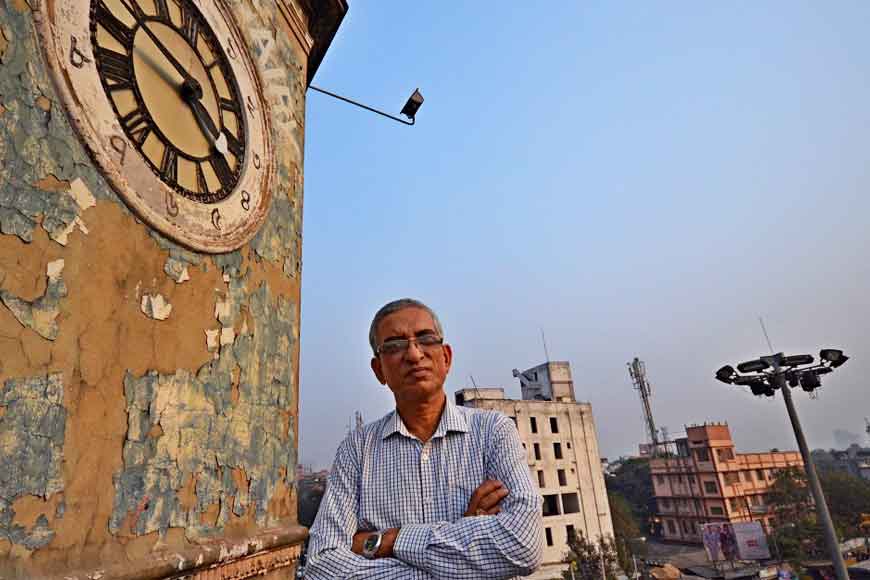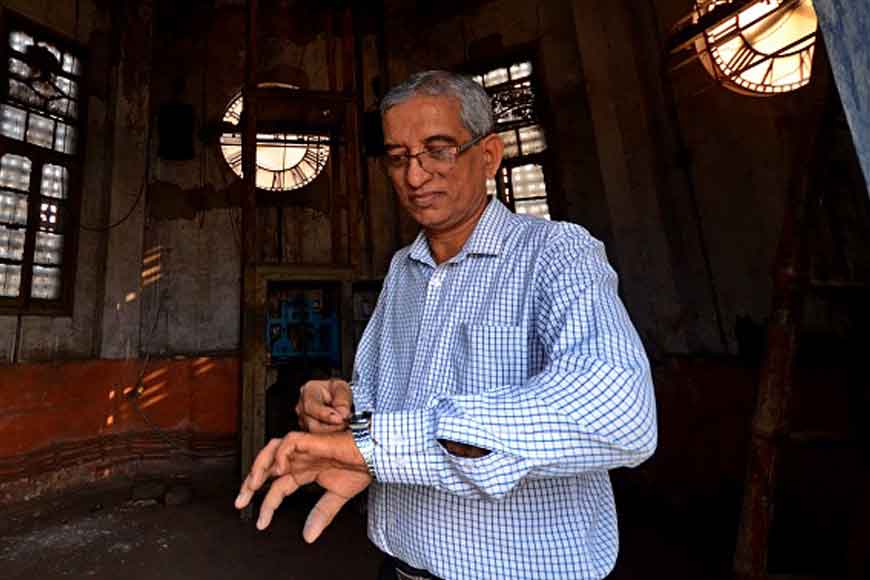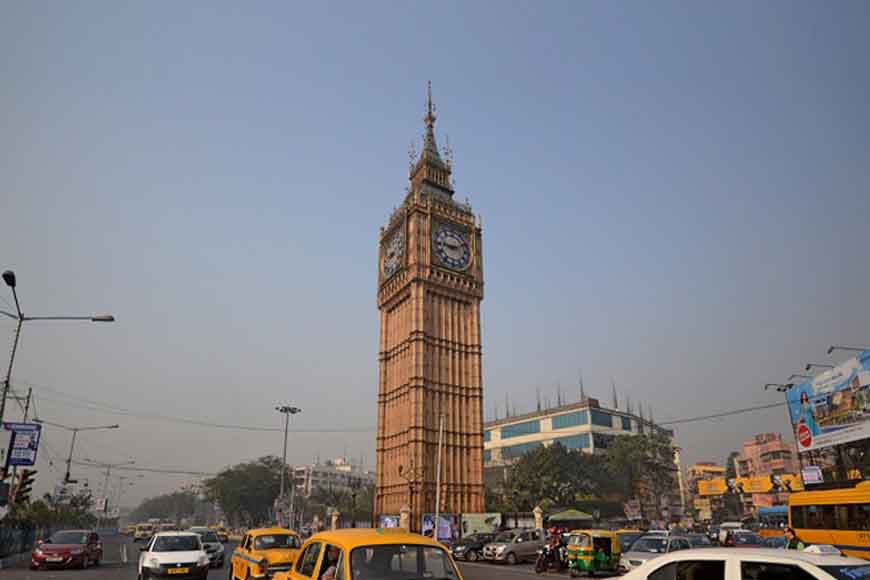Meet the Time-Keepers of Kolkata

They are the time-telling machines of Kolkata, innumerable clocks in various forms adorning important crossroads and building of this city. Clocks perched on churches, post offices, market-places, on the spires of station-buildings and even in the middle of thoroughfares. But many of them now have worn wheels, screws and pendulums staring bare. Over time, a lot of these clocks have gone out of commission – this is especially true for the Seth Thomas and U.S. Navy-made wall clocks that once were found in many Kolkata homes.

But who are the time-keepers? The guardian-figures locally known as “Ghori Babu” who kept these antique clocks ticking for decades! Modern Kolkata has one such esteemed ‘clock-man’ residing at College Street. He is Swapan Dutta, who happily let clocks rule his life and has been in charge of maintaining them for over fifty years. His father, Patit Paban Dutta, himself was a renowned clock expert. Swapan Dutta received this responsibility of maintaining countless clocks from his father.
He looks after famous clocks including New Market’s ever-popular Westminster clock, the Maniktala Bazar’s German clock, the Metropolitan Building’s non-striking clock, Dharmatala Church’s quarter-chiming clock and St. James’ Church’s hourly chiming clock. Even the clock of the Royal Calcutta Turf Club is maintained by him. Dutta keeps logs of the life-expectancies of their machine-parts and accordingly his workshop prepares remedial measures to keep them chiming. Often, he and his repair-team rush to Nepal or Agartala to track any faulty part that is not available in the city markets. Even in Nepal and Agartala there are many royal clocks and Dutta supervises them too.

A clock can be recognised in two ways – by the name of the maker and by the manner it operates. Several antique clocks are known by their clockmakers such as James McCabe, Hamilton, Cooke and Kelvey, Seth Thomas, Roy Cousin and JW Benson. Again, some are known by their characters like chiming, Westminster, Striking or Grandfather clock. Interestingly, Dutta’s son Satyajit too has turned into the next generation’s zesty ‘clock-man.’ He spends the entire day at his father’s workshop. Satyajit believes that a clock’s character can be understood as one handles it for fixing and insists before beginning any work on a clock, one should understand how it operates.
In his own words: ‘Let’s take the New Market clock into consideration – it is the only working Westminster clock in the city. Every fifteen minutes, it chimes with enlivening music. Each hour rings out only after the clock chimes four times every fifteen minutes, eight times every half hour, twelve times every forty-five minutes and sixteen times before striking the hourly time-point. Again, the Maniktala Bazar clock always appears to be standing still. But every one minute it jumps to life.’

Dutta says that even the writing of the numerals on the dial follows a distinct tradition. The Maniktala Tower clock bears the numbers 1 - 12 in Bengali numerals. This cannot be seen in any other tower clocks. Again, if the numbers are etched differently, the clock can be bereft of its heritage. Dutta says that the numbers one to four should be written with the Roman numeral ‘I’. One cannot use ‘IV’ for four as it contradicts age-old convention. Five to eight have to be written with the Roman ‘V’ and nine to twelve with ‘X’. An amused Dutta elaborates – ‘I had to show veritable proof once! I had fixed the burnt down clock of Nepal’s Durbar Marg and had written ‘IIII’ replacing the previous ‘IV’. My action caused a massive furore with newspapers reporting that I had committed a grave mistake. Thankfully, the tiny, ancient clock ticking inside the main body saved me. I took it out to show how it also has the number four written as ‘IIII’. This too was reported with gusto in the newspapers. I sometimes take this as the instance of Bengal winning over Nepal. Imagine what Satyajit Ray would have said bringing an analogy with his Feluda story Joto kando Kathmandu!









